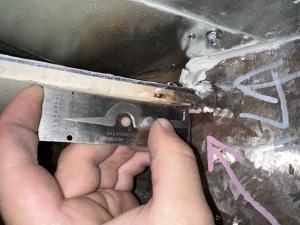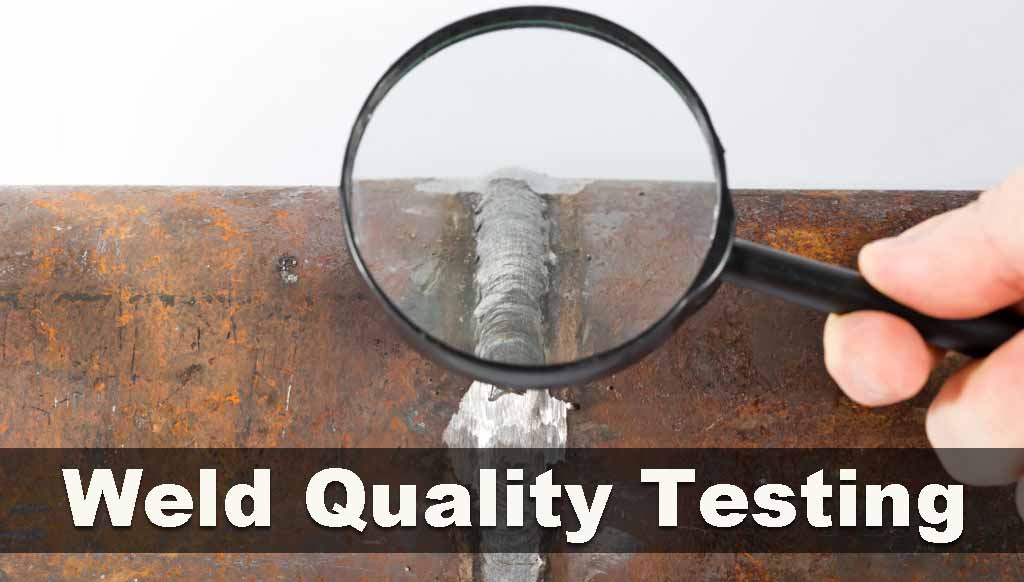A Comprehensive Overview to Welding Examination: Recognizing Requirements, Techniques, and Finest Practices for Quality Control
Welding examination plays an essential duty in making certain the structural honesty and security of bonded parts, demanding a thorough understanding of industry requirements such as those developed by AWS and ASME. As we check out these essential components, it comes to be apparent that the ramifications of welding evaluation prolong much beyond conformity, inviting a more detailed evaluation of exactly how these processes form market standards and techniques.
Relevance of Welding Evaluation
Welding evaluation plays a vital duty in ensuring the honesty and security of welded frameworks. It is an important procedure that validates that welds comply with predefined specifications, which is essential in various industries, consisting of building and construction, auto, and aerospace. By carrying out comprehensive assessments, prospective issues such as cracks, insufficient combination, and porosity can be identified early, preventing devastating failures that could lead to crashes or costly repairs.
The value of welding examination expands past mere compliance with laws; it additionally cultivates trust fund with stakeholders. Clients and regulatory bodies anticipate guarantee that the frameworks they rely on are developed to endure operational stresses. Efficient welding evaluation techniques contribute to long-term longevity and efficiency of the frameworks, eventually leading to decreased maintenance prices.
In addition, welding examination advertises a culture of top quality within companies, urging adherence to best techniques and continual renovation. By incorporating examination procedures right into the welding operations, business can boost their credibility and develop themselves as leaders in quality control. Finally, the significance of welding examination lies in its ability to secure lives, guarantee architectural integrity, and promote market standards, making it a vital aspect of welding operations.
Secret Industry Specifications
Ensuring conformity with crucial market standards is vital for preserving the quality and safety of bonded frameworks. Different organizations develop these requirements to promote finest techniques in welding and inspection - Welding Inspection Gilbert Arizona. Amongst the most recognized are the American Welding Culture (AWS) and the American Society of Mechanical Designers (ASME), which supply in-depth standards and requirements for welding processes and assessment criteria
AWS requirements, such as AWS D1.1 for architectural welding, rundown demands for materials, design, and testing to make sure the stability of welds. ASME codes, including ASME Area IX, regulate the certification of welders and welding procedures, making sure consistent high quality in industrial applications. Globally, the ISO 3834 common stresses top quality needs for blend welding, giving a framework for organizations to show compliance with worldwide ideal methods.
Conformity with these standards not only improves the integrity of welded frameworks but also alleviates threats related to structural failings. Adherence to industry standards is usually a prerequisite for governing approvals and can significantly influence task specifications. Eventually, understanding and applying these vital standards are vital for efficient welding evaluation and quality control.
Inspection Techniques Introduction
Effective welding assessment depends on a selection of methods developed to assess the high quality and honesty of welds. These strategies can be extensively categorized right into non-destructive and damaging screening (NDT) approaches. Non-destructive testing strategies, which are widely favored in the industry, permit the evaluation of welds without endangering the integrity of the product.

Amongst one of the most typically used NDT strategies are visual examination, ultrasonic testing, radiographic screening, and magnetic particle testing. Aesthetic assessment is typically the very first step in the evaluation process, making it possible for assessors to identify surface area flaws and evaluate weld bead profiles. Ultrasonic screening utilizes high-frequency audio waves to detect interior flaws and determine the thickness of welds. Radiographic testing entails using X-ray or gamma-ray imaging to expose internal problems, while magnetic particle testing works for discovering surface and near-surface discontinuities in ferromagnetic materials.
Each technique has its own advantages and constraints, making it vital for assessors to choose the most appropriate method based upon the certain needs of the project, the products involved, and the criticality of the welds being examined. This careful choice maintains and guarantees extensive analyses security and high quality standards in welding procedures.
Usual Defects and Their Implications
An extensive understanding of typical problems in welds is critical for maintaining architectural integrity and safety and security in bonded building and constructions. Welding issues can substantially jeopardize the mechanical residential or commercial properties of the joint, bring about failures that could endanger both personnel and equipment.
Usual defects consist of porosity, which manifests as little gas pockets trapped in the weld metal, compromising the general structure. Cracking is an additional prevalent concern, commonly arising from quick cooling or incorrect joint style, causing anxiety focus that can lead to catastrophic failings. Incomplete blend happens when the weld steel stops working to correctly bond with the base material, creating powerlessness that might bring about splitting up under load.
Other notable problems consist of damaging, where the weld grain wears down the base metal, and slag incorporations, which can impede the weld's toughness. Each of these problems has particular implications; as an example, porosity can reduce ductility, while breaking directly impacts tensile toughness. Recognizing and recognizing his response these defects throughout examination is essential for ensuring and applying restorative actions compliance with sector standards, inevitably safeguarding the structural integrity of welded settings up.
Finest Practices for Quality Control
Applying best practices for quality control in welding procedures is vital for attaining ideal outcomes pop over to this web-site and minimizing defects. One important practice is the facility of clear welding treatments that stick to industry criteria and specs. These procedures must consist of in-depth guidelines concerning material choice, joint prep work, and welding methods to make sure consistency and top quality.
Routine training and certification of welding employees are additionally important. Experienced welders that comprehend the relevance of high quality guarantee are a lot more likely to generate sound welds. Furthermore, executing a durable assessment program, including both non-destructive and aesthetic screening (NDT), can help recognize defects early while doing so, permitting timely rehabilitative actions.

Finally, cultivating a society of quality within the organization encourages workers to focus on top quality in their work. By sticking to these best practices, companies can boost the honesty of their welding procedures, eventually resulting in improved product high quality and decreased prices related to rework and repairs.

Final Thought
In conclusion, welding browse around this web-site assessment plays an important function in guaranteeing the stability and safety of bonded structures. Adherence to key industry standards, such as those established by AWS and ASME, is crucial for reliable high quality assurance. Employing different examination strategies permits the identification of usual issues, therefore alleviating possible risks. By implementing best practices, organizations can boost dependability, lessen maintenance expenses, and cultivate count on among customers, eventually adding to successful welding operations - Welding Inspection Gilbert Arizona.
Furthermore, welding evaluation advertises a society of quality within organizations, motivating adherence to ideal methods and constant enhancement. In final thought, the significance of welding assessment lies in its capability to guard lives, ensure structural dependability, and promote industry standards, making it a crucial facet of welding operations.
Amongst the most recognized are the American Welding Society (AWS) and the American Society of Mechanical Engineers (ASME), which provide comprehensive guidelines and requirements for welding procedures and assessment standards.
Ultimately, understanding and applying these essential standards are crucial for efficient welding examination and quality assurance.
Effective welding examination relies on a range of methods developed to assess the quality and stability of welds.
Comments on “Leading Tips for Effective Welding Inspection in Gilbert Arizona: A Comprehensive Overview”